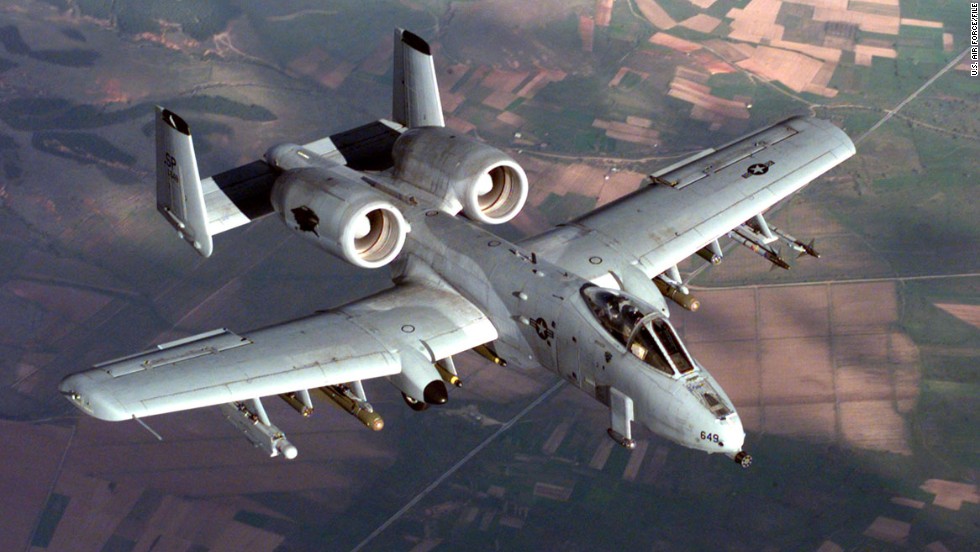CNN)The U.S. Air Force is sending its "tankbusters" back to Europe.
The service's European Command said this week that 12 A-10 Thunderbolts would be deployed to Spangdahlem Air Base, Germany, as part of Operation Atlantic Resolve, which was formed after Russia's intervention in Ukraine over the past year.
"The Air Force is increasing rotational presence in Europe to reassure our allies and partner nations that our commitment to European security is a priority," Lt. Gen. Tom Jones, vice commander, United States Air Forces in Europe -- Air Forces Africa, said in a statement.
The Air Force said besides operating in Germany, the A-10s will be forward deployed to other partner nations in Eastern Europe. U.S. forces have operated out of bases in Lithuania, Estonia, Latvia and Poland, among others, in the past year.
The A-10, also known as the "Warthog," was designed in the 1970s to support ground troops in Europe against the tanks and armored vehicles of the then-Soviet Union. Though the jets can carry a variety of bombs and missiles, they are best known for their nose-mounted, seven-barrel 30 mm Gatling gun that can fire almost 4,000 rounds per minute, enough to quickly blow apart a tank. The planes are also durable, with the pilot protected from ground fire by a wrapping of titanium often called "the bathtub." And they are designed for easy maintenance in battlefield areas, with interchangeable parts for the right and left sides of the aircraft.
Those capabilities have been battle-proven in Iraq, Afghanistan and the Balkans.
Late last year, A-10s were deployed in support of Operation Inherent Resolve, the U.S. military campaign against ISIS in Iraq and Syria. Air Force Secretary Deborah Lee James said in January that the A-10s had flown 11% of the Air Force's missions against ISIS despite coming into the conflict more than two months after initial U.S. involvement.
Despite its current usefulness, the A-10 is on the Defense Department's chopping block, with the Air Force wanting to turn over the jet's ground support mission to its newest fighter, the F-35.
Critics of the move say the A-10 can do better than the F-35 because it can get lower and slower, allowing pilots to get real eyes on targets. And they say it is way cheaper than the F-35, with a flight hour for the A-10 costing roughly half of what it costs to operate the F-35, according to numerous reports.
The Air Force says it just doesn't have the money to support the A-10, which will be more than 40 years old at its planned retirement in 2019, and its newest, more advanced aircraft.
"It's not about not liking or not wanting the A-10. It's about some very tough decisions that we have to make to recapitalize an Air Force for the threat 10 years from now," Gen. Mark Welsh, the Air Force chief of staff, said in January.
The dozen A-10s, along with 300 personnel from Davis-Monthan Air Force Base in Arizona, are expected to be in Germany by the end of February, the Air Force said. The deployment is expected to last about six months.
A-10s have not been deployed to Europe since May 2013, when 21 A-10s that were stationed at Spangdahlem were removed, according to a report from Stars and Stripes.




Ingen kommentarer:
Legg inn en kommentar
Merk: Bare medlemmer av denne bloggen kan legge inn en kommentar.